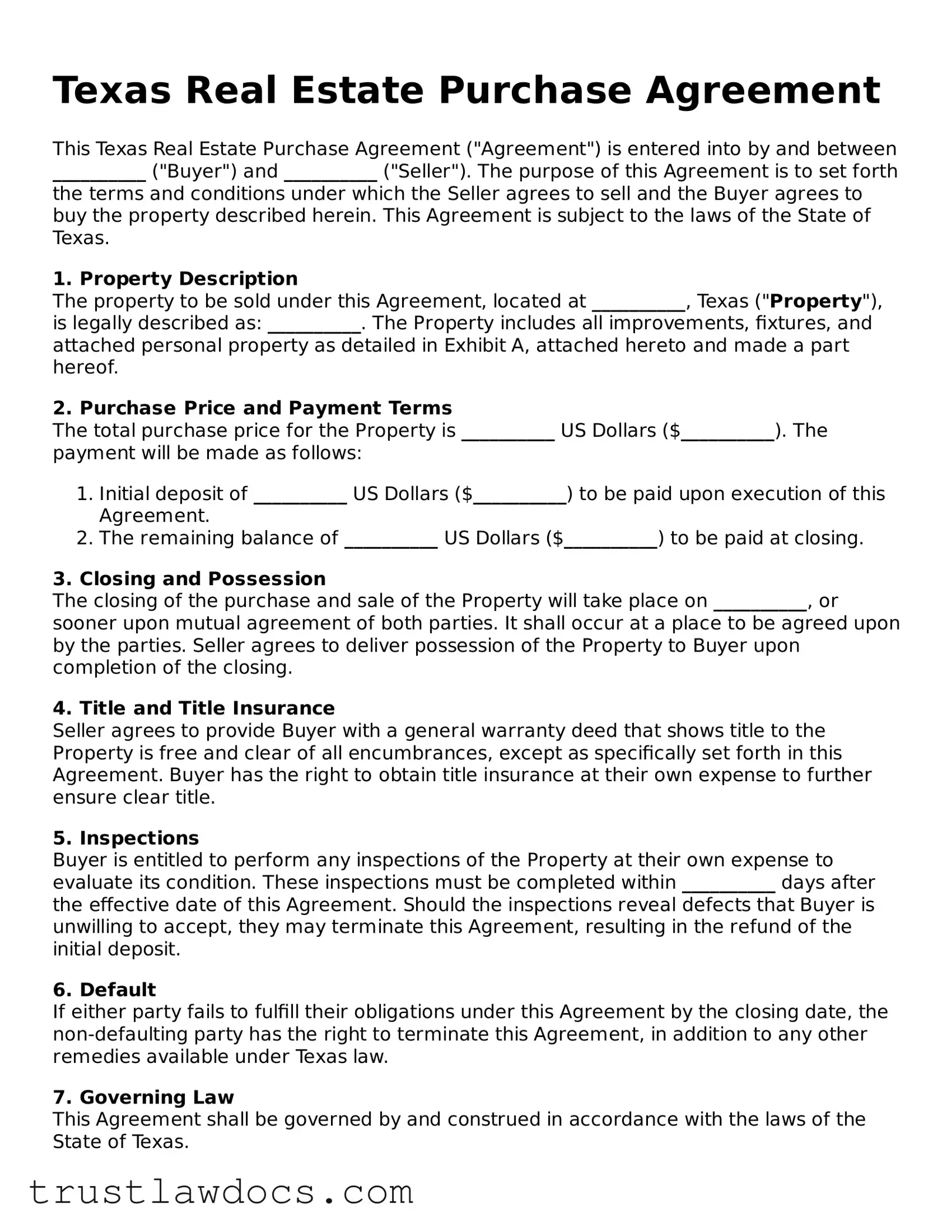Texas Real Estate Purchase Agreement
This Texas Real Estate Purchase Agreement ("Agreement") is entered into by and between __________ ("Buyer") and __________ ("Seller"). The purpose of this Agreement is to set forth the terms and conditions under which the Seller agrees to sell and the Buyer agrees to buy the property described herein. This Agreement is subject to the laws of the State of Texas.
1. Property Description
The property to be sold under this Agreement, located at __________, Texas ("Property"), is legally described as: __________. The Property includes all improvements, fixtures, and attached personal property as detailed in Exhibit A, attached hereto and made a part hereof.
2. Purchase Price and Payment Terms
The total purchase price for the Property is __________ US Dollars ($__________). The payment will be made as follows:
- Initial deposit of __________ US Dollars ($__________) to be paid upon execution of this Agreement.
- The remaining balance of __________ US Dollars ($__________) to be paid at closing.
3. Closing and Possession
The closing of the purchase and sale of the Property will take place on __________, or sooner upon mutual agreement of both parties. It shall occur at a place to be agreed upon by the parties. Seller agrees to deliver possession of the Property to Buyer upon completion of the closing.
4. Title and Title Insurance
Seller agrees to provide Buyer with a general warranty deed that shows title to the Property is free and clear of all encumbrances, except as specifically set forth in this Agreement. Buyer has the right to obtain title insurance at their own expense to further ensure clear title.
5. Inspections
Buyer is entitled to perform any inspections of the Property at their own expense to evaluate its condition. These inspections must be completed within __________ days after the effective date of this Agreement. Should the inspections reveal defects that Buyer is unwilling to accept, they may terminate this Agreement, resulting in the refund of the initial deposit.
6. Default
If either party fails to fulfill their obligations under this Agreement by the closing date, the non-defaulting party has the right to terminate this Agreement, in addition to any other remedies available under Texas law.
7. Governing Law
This Agreement shall be governed by and construed in accordance with the laws of the State of Texas.
8. Amendments
Any amendments or modifications to this Agreement must be made in writing and signed by both Buyer and Seller.
9. Entire Agreement
This Agreement contains the entire understanding between Buyer and Seller regarding the purchase and sale of the Property and supersedes all prior and contemporaneous negotiations and agreements, whether oral or written.
Please fill in the blanks and sign below to indicate your agreement with the terms outlined in this Texas Real Estate Purchase Agreement.
Buyer's Name: __________
Buyer's Signature: __________
Date: __________
Seller's Name: __________
Seller's Signature: __________
Date: __________
